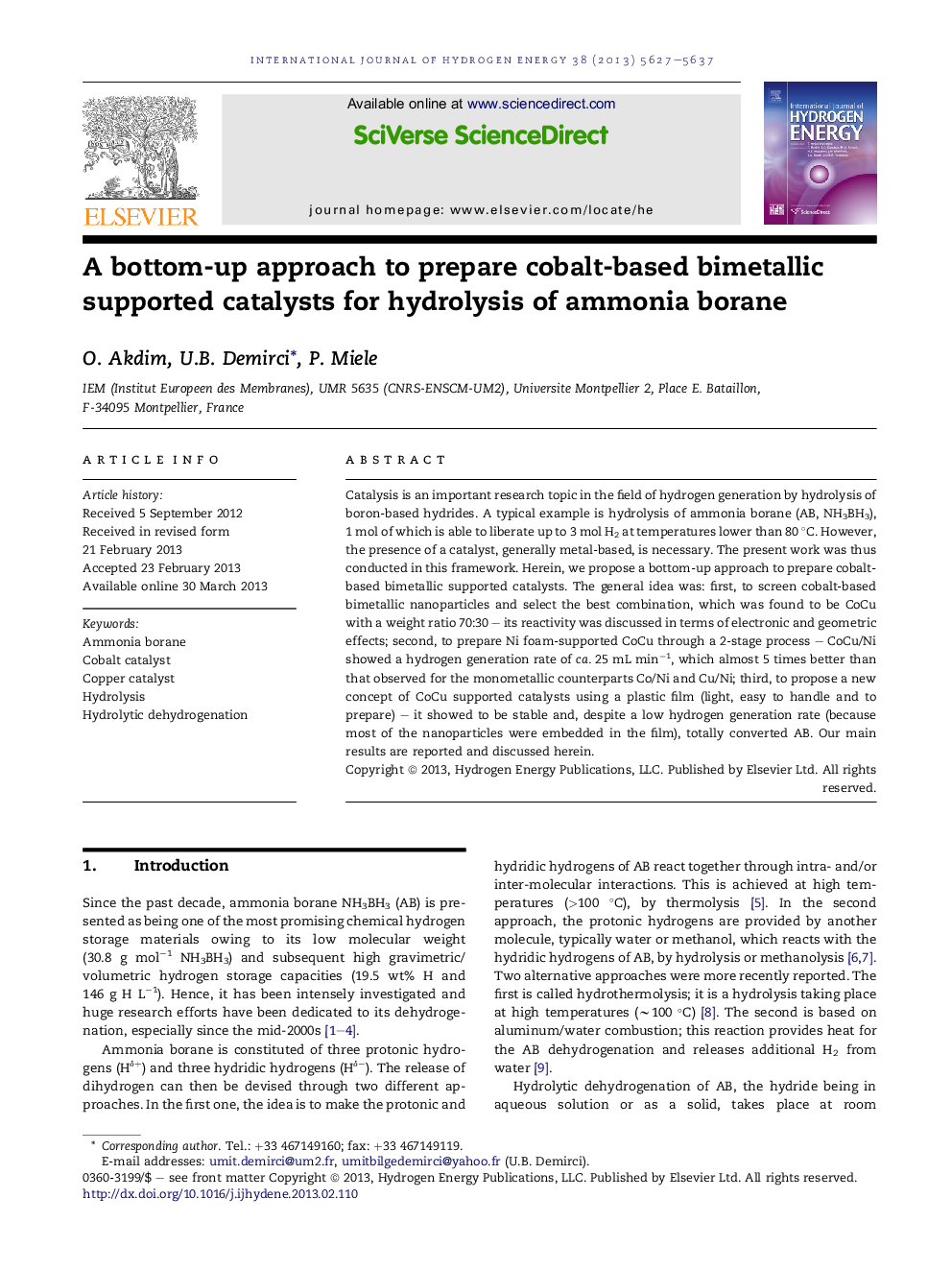| کد مقاله | کد نشریه | سال انتشار | مقاله انگلیسی | نسخه تمام متن |
|---|---|---|---|---|
| 1281671 | 1497531 | 2013 | 11 صفحه PDF | دانلود رایگان |

• Cobalt-based bimetallic catalysts were prepared for hydrolysis of ammonia borane.
• A bottom-up approach, from nanoparticles to shaped catalysts, was considered.
• The combination CoCu showed improved reactivity in comparison to Co.
• CoCu was successfully supported on Ni foam and the shaped catalyst was reactive.
• A new concept of shaped catalyst, using plastic film as support, is proposed.
Catalysis is an important research topic in the field of hydrogen generation by hydrolysis of boron-based hydrides. A typical example is hydrolysis of ammonia borane (AB, NH3BH3), 1 mol of which is able to liberate up to 3 mol H2 at temperatures lower than 80 °C. However, the presence of a catalyst, generally metal-based, is necessary. The present work was thus conducted in this framework. Herein, we propose a bottom-up approach to prepare cobalt-based bimetallic supported catalysts. The general idea was: first, to screen cobalt-based bimetallic nanoparticles and select the best combination, which was found to be CoCu with a weight ratio 70:30 – its reactivity was discussed in terms of electronic and geometric effects; second, to prepare Ni foam-supported CoCu through a 2-stage process – CoCu/Ni showed a hydrogen generation rate of ca. 25 mL min−1, which almost 5 times better than that observed for the monometallic counterparts Co/Ni and Cu/Ni; third, to propose a new concept of CoCu supported catalysts using a plastic film (light, easy to handle and to prepare) – it showed to be stable and, despite a low hydrogen generation rate (because most of the nanoparticles were embedded in the film), totally converted AB. Our main results are reported and discussed herein.
Journal: International Journal of Hydrogen Energy - Volume 38, Issue 14, 10 May 2013, Pages 5627–5637